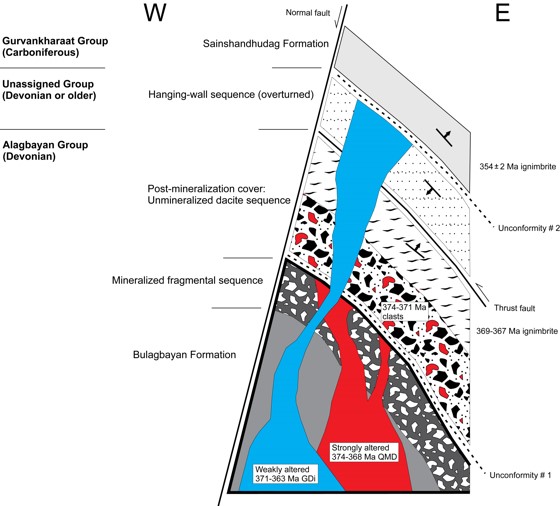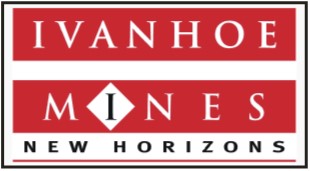Project Information
- Ore Deposit: Porphyry
- Commodity: Copper, Gold
- Research Themes: Copper, Gold Deposits, Regional Metallogeny
- Location: South Gobi Region, Mongolia
- Project Status: Completed
- Start Date: 2003
- End Date: 2008
This PhD research project focused on the volcanostratigraphic framework and magmatic evolution of the Oyu Tolgoi porphyry Cu-Au district in Mongolia. Drill core logging, field mapping, geochronology and geochemistry were used to constrain the stratigraphy, structure, timing and origin of the world-class Cu-Au deposits in the South Gobi Desert. Project results indicate that magma mixing, adakite-like magmatism and rapid uplift and erosion in a juvenile marine arc setting differentiate the ore-stage geologic environment at Oyu Tolgoi from other settings in active and fossil volcanic arcs.
The super-giant Oyu Tolgoi porphyry copper-gold deposits in the South Gobi desert, Mongolia, consist of multiple discrete porphyry centers aligned within a north-northeast trending, >6.5 km long, arc-transverse mineralized corridor. The porphyries are linked to a tectono-magmatic event at ~372 Ma within a Devonian to Carboniferous volcanic arc, and U-Pb (zircon) geochronology records magmatic activity from ~390 Ma to ~320 Ma. The Oyu Tolgoi district underwent at least three discrete periods of syn- to post-mineral shortening and there is evidence for at least three unconformities within the Paleozoic sequence.
Although the deposits were formed in an active orogenic environment characterized by rapid uplift, their preservation is a reflection of climatic effects as well insulation from erosion by rapid burial under mass-wasted and pyroclastic material in the volcaniclastic apron of late-mineral dacitic volcanoes.
The porphyry copper-gold deposits are spatially and temporally related to medium- to high-K calc-alkaline quartz monzodiorite (~372 Ma) and granodiorite (~366 Ma) intrusive phases that comprise the Late Devonian Oyu Tolgoi Igneous Complex (OTIC). Adakite-like wholerock compositions as well as zircon grains with high CeN/CeN*, EuN/EuN* and Yb/Gd in the sample populations from syn- and late-mineral porphyry intrusions are different from younger intrusions that are not related to porphyry Cu-Au deposit formation. Moreover, mixed zircon populations within OTIC intrusions indicate that efficient assimilation of material from different host rocks by a convecting magma chamber occurred.
Mafic to intermediate volcanic units evolved from tholeiitic to calc-alkaline compositions, which is interpreted to be a reflection of marine arc maturation and thickening. Felsic rock suites are dominantly high-K calc-alkaline, regardless of age. Nd-isotopic geochemistry from all suites is consistent with magma derivation from depleted mantle in an intra-oceanic volcanic arc and lead isotopic compositions indicate that the sulfides in the porphyry Cu-Au deposits are genetically linked to the Late Devonian magmas.
Magma mixing, adakite-like magmatism and rapid uplift and erosion in a juvenile marine arc setting differentiate the ore-stage geologic environment at Oyu Tolgoi from other settings in active and fossil volcanic arcs.


Summary diagram for the E-dipping stratigraphic sequence of Devonian to Carboniferous rocks from the Oyu Tolgoi district. Copper-gold mineralization is restricted to the space below unconformity no. 1.




